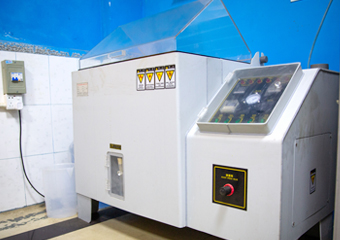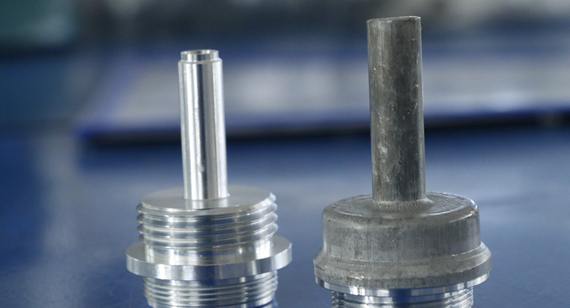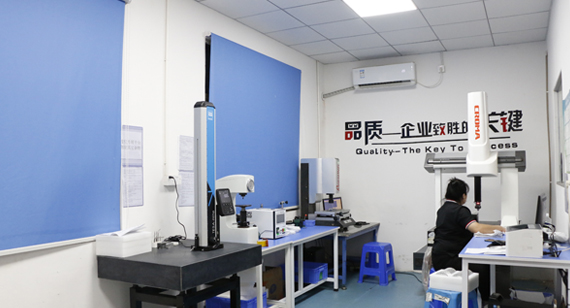15 years one-stop China custom CNC machining parts factory

Hey there I’m VMT Sam!
With 25 years of CNC machining experience we are committed to helping clients overcome 10000 complex part-processing challenges all to contribute to a better life through intelligent manufacturing. Contact us now
 159 |
Published by VMT at Dec 28 2023
159 |
Published by VMT at Dec 28 2023
Challenges of Salt Spray Testing: Why are CNC Machining Parts Difficult to Pass After Being Oxidized?
In today's manufacturing industry, CNC machining technology has become a key means of manufacturing precision parts. However, although precision machined parts can achieve extremely high accuracy and surface quality during CNC machining, they often encounter challenges during salt spray testing. This article will delve into this issue, analyze the reasons why CNC machining parts are difficult to pass the salt spray test after oxidation, and propose corresponding solution strategies.
1. The Importance of Salt Spray Testing
Salt spray testing is a common method for evaluating the corrosion resistance of metallic materials. By simulating the ocean or other corrosive environments, metal materials are exposed to salt spray and the degree of corrosion is observed to evaluate their corrosion resistance. For precision machined parts, salt spray testing is an important means to ensure that they can operate stably in harsh environments.

2. The Reason Why CNC Machining Parts are Difficult to Pass the Salt Spray Test After Oxidation
Oxide layer instability
During the oxidation treatment of CNC machined parts, an oxide film will be formed on the surface. The stability of this oxide film is crucial to the corrosion resistance of the parts. If the oxide film is uneven or too thin, it will cause instability of the oxide layer and cause corrosion during the salt spray test. In addition, some materials may develop cracks or pores when oxidized, and these defects will also accelerate the corrosion process.
Effect of surface roughness
Surface roughness is an important factor affecting the corrosion resistance of precision machined parts. Rough surfaces provide better adhesion and corrosion resistance. However, if the surface roughness is insufficient, the adhesion between the oxide layer and the substrate will be weakened, making peeling or corrosion prone to occur during salt spray testing.
The harshness of the salt spray environment
The salt spray environment in the salt spray test has a great impact on the test results. If the salt spray environment is too harsh, such as the salt spray concentration is too high, the temperature is too high, the humidity is too high, etc., it will accelerate the corrosion process of parts. For some sensitive materials or processes, even slight changes in the environment can cause serious corrosion problems.
Uncertainty about test conditions
The results of the salt spray test are affected by many factors, such as the uniformity of the salt spray, fluctuations in temperature and humidity, etc. If the test conditions are unstable or non-standard, it will lead to uncertainty in the test results. This makes it difficult to accurately evaluate the performance of the parts in the salt spray test, making it difficult to make accurate judgments about their corrosion resistance.
3. Solution Strategies and Suggestions
Optimize oxidation treatment process
In order to improve the corrosion resistance of CNC machined parts, the oxidation treatment process should be optimized. By adjusting parameters such as the composition of the treatment solution, treatment time and temperature, the formation of the oxide film is ensured to be stable and uniform. In addition, oxidation equipment should be inspected and treated regularly to ensure its proper operation and effectiveness.
Improve surface roughness
Before oxidation treatment, precision machined parts should be surface roughened to improve their surface roughness. This can be achieved by methods such as sandblasting, mechanical grinding or chemical etching. Proper surface roughness can improve the adhesion between the oxide layer and the substrate, thereby improving the corrosion resistance of the parts.

Standardize salt spray test conditions
In order to obtain accurate salt spray test results, test conditions should be standardized. Ensure that the uniformity and concentration of salt spray meet standard requirements, and control environmental factors such as temperature and humidity to remain within the specified range. In addition, salt spray testing equipment should be calibrated and maintained regularly to ensure its accuracy and reliability.
Material selection and handling
Selecting materials and processing techniques with excellent corrosion resistance is the key to improving the corrosion resistance of CNC machined parts. According to the application environment and needs, reasonable selection of materials and processing techniques can significantly improve the corrosion resistance of parts. At the same time, the materials should be fully tested and verified to ensure that they can operate stably under various environmental conditions.

Regular quality testing and evaluation
In order to promptly detect and solve potential corrosion resistance problems, quality inspection and evaluation of CNC machined parts should be carried out regularly. This includes surface inspection, non-destructive testing and corrosion resistance assessment. Through regular quality testing and evaluation, potential corrosion resistance problems can be discovered and solved in time, thereby ensuring the quality and reliability of parts.

4. Conclusion
Salt spray testing is an important means to evaluate the corrosion resistance of precision machined parts, but it often encounters challenges in actual operations. In order to improve the corrosion resistance of CNC machined parts and their ability to pass salt spray tests, aspects such as optimizing the oxidation treatment process, improving surface roughness, standardizing salt spray test conditions, selecting appropriate materials and processing techniques, and regular quality inspection and evaluation Get started. Through the comprehensive application of these measures, the corrosion resistance and reliability of CNC machined parts can be effectively improved to meet various stringent application requirements. At the same time, strengthening cooperation and exchanges with suppliers, customers and industry organizations, and keeping abreast of the latest technology and standard requirements are also of great significance to promoting the sustainable development of the precision machined parts industry.
Ready To Start Your Next Project?
Get Instant Quote

Request a Free Quote
Send us a message if you have any questions or request a quote. We will get back to you ASAP!